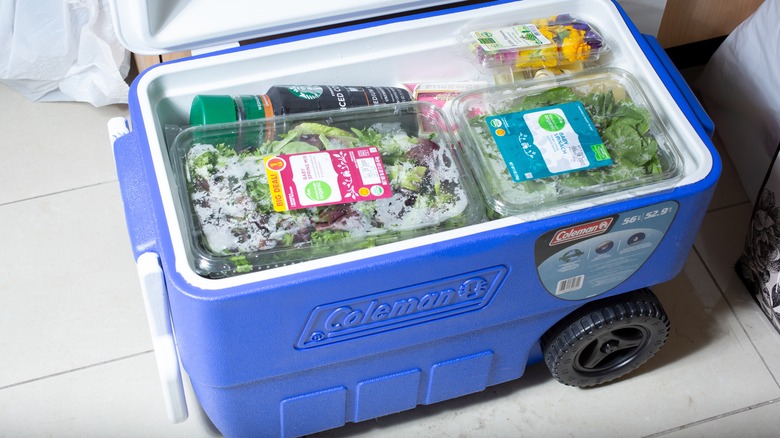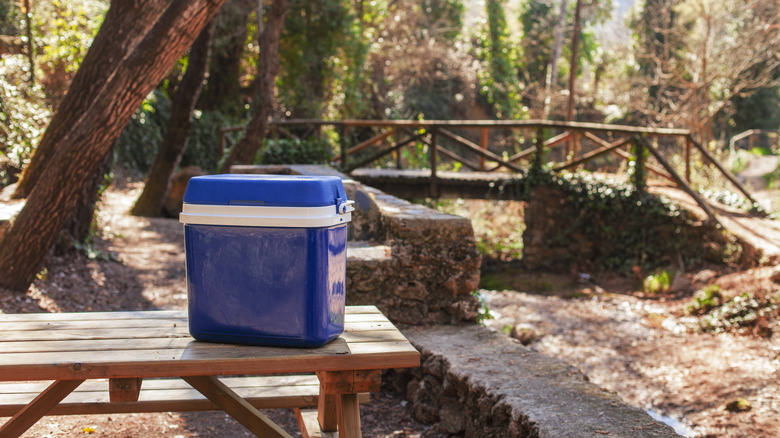The Best Way To Set Up Your Storage Station For Cooking Outside
Cooking outside in the fresh air is an incredible feeling — until you reach into your cooler and pull out soggy tortillas and wet cheese. If you've kept food in a cooler for any extended amount of time before, you've likely experienced this. It seems that no matter how much ice you add or how you pack the cooler, it's inevitable that something ends up at the bottom, sitting in melting ice. While it can be difficult to work against time and heat, there are a few simple steps to avoid wet, soggy, or even lukewarm food.
There is a lot to consider before buying a cooler, but one of the most important features is how long it maintains cold temperatures and frozen ice. Every cooler should list on it's packaging how long it keeps ice frozen for. With this knowledge, you'll know how much time you have before you need to start draining the melted ice and adding more. If you have a well-used or older cooler, check for any leaks by filling it with water to see if any starts to escape. And, be sure that the lid fully closes to ensure the cold air remains trapped inside. To make sure no cold air escapes, add a layer of foam to the top of your cooler.
How to pack your storage station properly
If you have confidence in the quality of the cooler, you can now focus on how you organize food and ice inside of it. If you can, opt for ice blocks or large freezer packs. While these are a bit bulkier, they keep the temperature colder for longer than smaller ice cubes. Another option is to use plastic water bottles that have been frozen. Place the ice or frozen bottles at the bottom of the cooler so when they do start to melt, the water doesn't drain down on top of the food. To avoid wet, soggy food, pack all food in plastic bags and airtight containers to prevent water seepage.
Finally, remember a few key food safety rules. Food stored in the cooler should be kept at 33°F to 41°F to avoid spoilage, and this can be measured with a kitchen thermometer. Add extra ice if the forecast calls for particularly high temps. If packing raw meat into the cooler, place at the bottom of the cooler. Then, pack fresh food at the top to prevent contamination issues.

